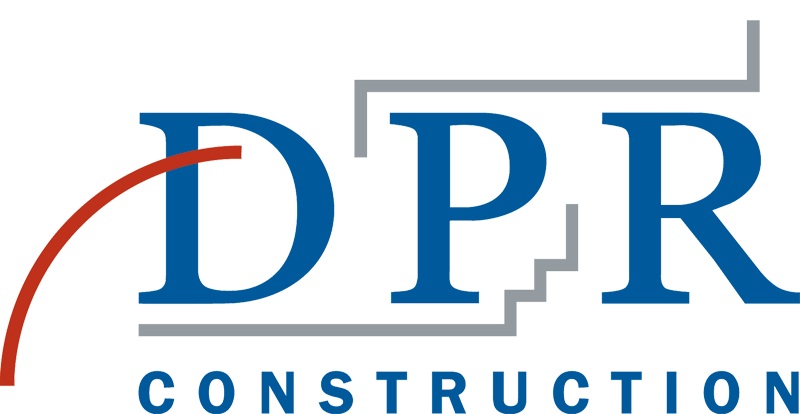DPR Construction, a national builder specializing in complex and sustainable projects, announced today its purchase of Atlanta-based Hardin Construction Company, LLC. The two companies are combining operations in the Southeast and Texas markets, including Atlanta, Austin, Houston, Raleigh, Tampa, Orlando and West Palm Beach. The combined company will operate nationally as DPR Construction, with the exception of Atlanta where it will operate as DPR Hardin Construction.
“We’re excited to add such a great company of builders to our organization. We’ve always had tremendous respect for Hardin and share a common approach to business, particularly our commitment to customers, our people and core company values,” said Doug Woods, co-founder and president of DPR. “Together, we are even stronger, particularly in the Southeast, a geography that offers significant growth potential.
“Hardin is a good fit for DPR. We share ideals and beliefs, we are both active in the communities in which we operate, and, most of all, we both care a great deal about our people and moving the industry forward,” said Brantley Barrow, who has served as Chairman of Hardin since 1979 and, along with retiring President, Bill Pinto, will assume supporting roles throughout the Southeast.
Russ Brockelbank, an Atlanta-native and a 15-plus-year Hardin veteran, will continue to be responsible for day-to-day Atlanta operations for DPR Hardin Construction. “We’re excited about what this deal means for our customers and employees. Now, our presence is stronger, our roots run even deeper, and our experience is unmatched in the marketplace.”
The newly-combined company will have seven offices and more than 500 professional staff and craft employees throughout the Southeast and Texas, with a projected 2013 revenue exceeding $800 million. Operating as a “local builder with national capabilities,” DPR will have 18 offices nationally, with nearly 3,000 professional staff and craft employees and a projected 2013 revenue of $2.8 billion. The company will continue to focus on its core markets and building complex and sustainable projects.
Both companies are privately held and terms of the agreement will not be disclosed. Hardin projects currently under construction will be completed as Hardin Construction, including joint venture projects.
About DPR Construction
DPR Construction is a forward-thinking national general contractor and construction manager specializing in technically complex and sustainable projects for the advanced technology/mission critical, life sciences, healthcare, higher education and corporate office markets. Founded in 1990, DPR is a privately held, employee-owned company that has grown to a multi-billion-dollar organization with 18 offices around the country, including Atlanta, Austin, Texas, Denver, Houston, Newport Beach, Calif., Orlando, Fla., Pasadena, Calif., Phoenix, Raleigh, N.C., Redwood City, Calif., Richmond, Va., Sacramento, Calif., San Diego, San Francisco, San Jose, Calif., Tampa, Fla., Washington D.C. and West Palm Beach, Fla. It is currently ranked No. 15 on FORTUNE’s “100 Best Companies to Work For” list (2013). For more information, visit http://www.dpr.com.
Related Stories
| Oct 13, 2014
The mindful workplace: How employees can manage stress at the office
I have spent the last several months writing about healthy workplaces. My research lately has focused on stress—how we get stressed and ways to manage it through meditation and other mindful practices, writes HOK's Leigh Stringer.
| Oct 13, 2014
Debunking the 5 myths of health data and sustainable design
The path to more extensive use of health data in green building is blocked by certain myths that have to be debunked before such data can be successfully incorporated into the project delivery process.
| Oct 13, 2014
Department of Agriculture launches Tall Wood Building Competition
The competition invites U.S. developers, institutions, organizations, and design teams willing to undertake an alternative solution approach to designing and building taller wood structures to submit entries for a prize of $2 million.
| Oct 12, 2014
AIA 2030 commitment: Five years on, are we any closer to net-zero?
This year marks the fifth anniversary of the American Institute of Architects’ effort to have architecture firms voluntarily pledge net-zero energy design for all their buildings by 2030.
| Oct 10, 2014
A new memorial by Zaha Hadid in Cambodia departs from the expected
The project sees a departure from Hadid’s well-known use of concrete, fiberglass, and resin. Instead, the primary material will be timber, curved and symmetrical like the Angkor Wat and other Cambodian landmarks.
| Oct 9, 2014
Regulations, demand will accelerate revenue from zero energy buildings, according to study
A new study by Navigant Research projects that public- and private-sector efforts to lower the carbon footprint of new and renovated commercial and residential structures will boost the annual revenue generated by commercial and residential zero energy buildings over the next 20 years by 122.5%, to $1.4 trillion.
| Oct 9, 2014
More recession-postponed design projects are being resurrected, says AIA
About three quarters of the estimated 700 firms that serve as panelists on AIA’s Architectural Billings Index (ABI) had delayed or canceled major design projects in response to recessionary pressures. Nearly one-third of those firms now say they have since restarted stalled projects.
| Oct 9, 2014
Steven Holl's 'intersecting spheres' scheme for Taipei necropolis gets green light
The schematic design has been approved for the 50 000-sm Arrival Hall and Oceanic Pavilion for the Taiwan ChinPaoSan Necropolis.
| Oct 9, 2014
Beyond the bench: Meet the modern laboratory facility
Like office workers escaping from the perceived confines of cubicles, today’s scientists have been freed from the trappings of the typical lab bench, writes Perkins+Will's Bill Harris.
| Oct 8, 2014
New tools for community feedback and action
Too often, members of a community are put into a reactive position, asked for their input only when a major project is proposed. But examples of proactive civic engagement are beginning to emerge, write James Miner and Jessie Bauters.

















